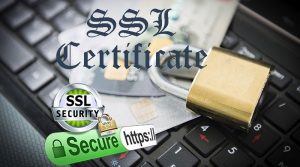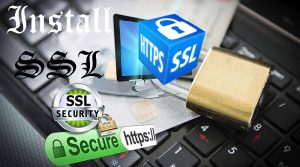AutoInstall SSL Tools Overview
- What is AutoInstall SSL™? AutoInstall SSL™ is a revolutionary new plugin that allows you to install your SSL certificate(s) with just a few clicks of the mouse. This plugin automatically generates your CSR, validates your domain, installs your certificate, and verifies that the installation is complete.
- What control panels does AutoInstall SSL™ work with? Currently, AutoInstall SSL™ is available only with cPanel and Plesk. A Linux and Windows Desktop version for AutoInstall SSL™ are also in the pipeline. AutoInstall SSL™ has also been developed to work seamlessly with WHMCS, but you can still use AutoInstall SSL™ without having to purchase through WHMCS.
- What is the Token? The Token is unique identifying number that come with every SSL certificate we offer. This Token tie the certificate to your order and are used during the AutoInstall SSL™ process.
- How do I find my Token?After you purchase your certificate, you should receive an automated email with your Token and directions on the next steps. Also, you can retrieve the Token through your client area portal by clicking on “My Services” under the “Services” tab at the top of the screen. Then, all you have to do is click on the “View Details” button next to the certificate in question.
- How much does AutoInstall SSL™ cost? TAutoInstall SSL™ is available completely free of charge.
- Where can I locate AutoInstall SSL™? For cPanel, You can locate AutoInstall SSL™ through your cPanel under the “Security” tab. For Plesk, You can locate AutoInstall SSL™ inside sidebar.
- Which SSL certificates does AutoInstall SSL™ work with? AutoInstall SSL™ works with every SSL certificate brand we offer, except for Certum. So, you can use AutoInstall SSL™ for certificates from Symantec, GeoTrust, Thawte, RapidSSL, and Comodo.
- How does AutoInstall SSL™ work with OV/EV certificates? AutoInstall SSL™ works with both OV and EV certificates, but you must go through the validation process before installation can be complete. If you have not completed the full validation process for these certificates and attempt to use AutoInstall SSL™, the process will pause during the installation process and you will be informed which validation step(s) you have yet to complete.
- How does AutoInstall SSL™ work with OV/EV certificates? AutoInstall SSL™ works with both OV and EV certificates, but you must go through the validation process before installation can be complete. If you have not completed the full validation process for these certificates and attempt to use AutoInstall SSL™, the process will pause during the installation process and you will be informed which validation step(s) you have yet to complete.
- I have purchased my SSL certificate. How do I start the process of using AutoInstall SSL™? Once you have purchased your SSL certificate, you next need to retrieve your Token. Our system will automatically send an email to you that contains your Token, along with next step instructions.
Also, you can retrieve your Token directly from your client area panel. You just need to click on the “Services” tab at the top and then click on “My Services”. On the next page, you can locate the SSL certificate you purchased and click on the “View Details” button. The Token is listed at the bottom of the next page. After retrieving your Token, login to your hosting control Panel. For cPanel click on the AutoInstall SSL™ icon under the “Security” tab. For Plesk click on the AutoInstall SSL™ icon inside the sidebar. You will then be prompted to copy and paste the Token into their field to get the process started, along with selected the domain you wish to secure. ***Img***
***Img*** - I haven’t received an email after purchasing my SSL certificate. What should I do? If for whatever reason you have not receive your AutoInstall SSL™ email with your Token listed, please contact Us and we will supply the information need it to you.
- How do I secure my subdomain(s)? To secure your subdomain(s) along with your main domain, you will need to purchase a Wildcard certificate. Fortunately, these can be installed via AutoInstall SSL™ and the process is mostly the same. Once you have purchased your Wildcard certificate and have gotten your Token, you can login to your hosting control panel (i.e. cPanel, Plesk etc) and click on the AutoInstall SSL™ icon, and insert the Token. Once you do, the Domain/webspace bar will appear, and under it will be a button that reads, “Retrieve Sub-Domains”. ***Img***
Once you click on “Retrieve Sub-Domains” button, a list of all of the subdomains associated with that domain will appear. You then have the option to select all of your subdomains or pick and choose which ones you want to secure. ***Img*** After the subdomains have been selected, the rest of the AutoInstall SSL™ process is exactly the same. - How do I secure multiple domains with just one certificate? For this, you need to purchase a multi-domain certificate, which is also compatible with AutoInstall SSL™. Once you have purchased a Multi-Domain SSL certificate and get your Token, you can login to your hosting control panel (i.e. cPanel, Plesk etc), click on the AutoInstall SSL™ icon, and insert the Token. Once you select your Domain/webspace, you can click on the “Add Domain” button underneath ***Img*** After clicking “Add Domain”, you can then add whichever additional domain you wish to cover in the new field. ***Img*** You can click the “Add Domain” button for as many domains as you purchased and then proceed as normal throughout the rest of the process.
- How do I add domains to an existing order via AutoInstall SSL™? You can add domains to any Multi-Domain SSL order, as long as it does not exceed the total number of allowable domains. To do this via AutoInstall SSL™, you must retrieve your Token for that order, which you can get via WHMCS or from your SSL provider, if you aren’t using WHMCS. Once you retrieve the Token, you can login to your hosting control panel (i.e. cPanel, Plesk etc), click on the AutoInstall SSL™ icon, and input the Token.
Once you do this, a “Manager Your Active Certificate” tab will appear below with a list of options. You just need to click on “Re-issue Certificate”. ***Img*** After this has been clicked, you have the option to change/add domain names and go back through the installation process. - How long does the AutoInstall SSL™ process take? Certificate Authority (CA). In our experience, both RapidSSL and Comodo certs typically take around one minute to install, while the more premium brands like Symantec, Thawte, and GeoTrust, can take around 5 minutes to install. While response times can very, it typically takes just minutes and is significantly quicker than performing manual installation and generating the CSR yourself .
- Does AutoInstall SSL™ support SSL certificates purchased from other vendors? AutoInstall SSL™ only works for certs purchased through our system, since only our system generates the unique Token.
- Do I still need to generate a CSR? Nope! You will not have to generate a CSR from your server – AutoInstall SSL™ does this for you.
- How can I retrieve my Private Key? To do this via AutoInstall SSL™, you must retrieve the Token for that order, either via WHMCS or directly from your provider if you aren’t using WHMCS. Once you retrieve the Token, you can login to your hosting control panel (I.e. cPanel, Plesk etc), click on the AutoInstall SSL™ icon, and input the Token.
Once you do this, a “Manager Your Active Certificate” tab will appear below with a list of options. You simply need to click on “Retrieve Private key for backup”. ***Img*** - How can I re-install the SSL certificate? Once you retrieve the Token, you can login to your hosting control panel (i.e. cPanel, Plesk etc), click on the AutoInstall SSL™ icon, and input the Token.
Once you do this, a “Manager Your Active Certificate” tab will appear below with a list of options. You simply need to click on “Re-install Certificate”. ***Img*** - How can I download my SSL certificate?To do this via AutoInstall SSL™, you must retrieve the Token for that order, either via WHMCS or directly from your provider if you aren’t using WHMCS. Once you retrieve the Token, you can login to your hosting control panel (i.e. cPanel, Plesk etc), click on the AutoInstall SSL™ icon, and input the Token.
Once you do this, a “Manager Your Active Certificate” tab will appear below with a list of options. You simply need to click on “Download Certificate”. ***Img*** - How can I check installation? To do this via AutoInstall SSL™, you must retrieve the Token for that order, either via WHMCS or directly from your provider if you aren’t using WHMCS. Once you retrieve the Token, you can login to your hosting control panel (i.e. cPanel, Plesk etc), click on the AutoInstall SSL™ icon, and input the Token.
Once you do this, a “Manager Your Active Certificate” tab will appear below with a list of options. You simply need to click on “Check Installation”. ***Img*** - Does AutoInstall SSL™ work with Code Singing Certificates?AutoInstall SSL™ does not work with Code Signing Certificates.
- Can I use AutoInstall SSL™ to renew my SSL certificate(s)?AYes, you can use AutoInstall SSL™ to renew an SSL certificate. Technically, renewing an SSL certificate is the same as buying a new certificate. So, if you have an active certificate you wish to renew, you can go through the purchasing process using AutoInstall SSL™ and our system will recognize the purchase as a renewal.



